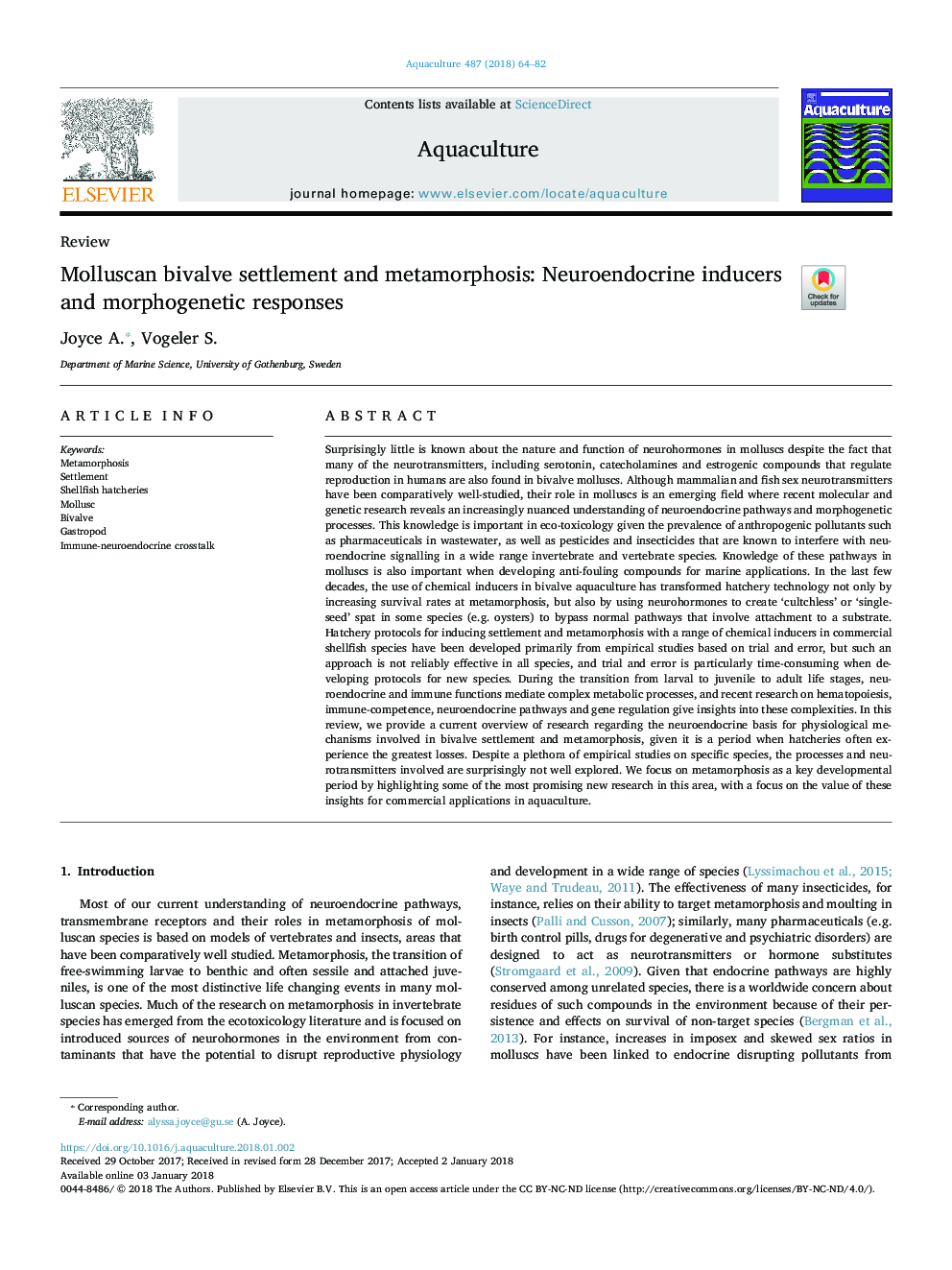| Article ID | Journal | Published Year | Pages | File Type |
|---|---|---|---|---|
| 8493429 | Aquaculture | 2018 | 19 Pages |
Abstract
Surprisingly little is known about the nature and function of neurohormones in molluscs despite the fact that many of the neurotransmitters, including serotonin, catecholamines and estrogenic compounds that regulate reproduction in humans are also found in bivalve molluscs. Although mammalian and fish sex neurotransmitters have been comparatively well-studied, their role in molluscs is an emerging field where recent molecular and genetic research reveals an increasingly nuanced understanding of neuroendocrine pathways and morphogenetic processes. This knowledge is important in eco-toxicology given the prevalence of anthropogenic pollutants such as pharmaceuticals in wastewater, as well as pesticides and insecticides that are known to interfere with neuroendocrine signalling in a wide range invertebrate and vertebrate species. Knowledge of these pathways in molluscs is also important when developing anti-fouling compounds for marine applications. In the last few decades, the use of chemical inducers in bivalve aquaculture has transformed hatchery technology not only by increasing survival rates at metamorphosis, but also by using neurohormones to create 'cultchless' or 'single-seed' spat in some species (e.g. oysters) to bypass normal pathways that involve attachment to a substrate. Hatchery protocols for inducing settlement and metamorphosis with a range of chemical inducers in commercial shellfish species have been developed primarily from empirical studies based on trial and error, but such an approach is not reliably effective in all species, and trial and error is particularly time-consuming when developing protocols for new species. During the transition from larval to juvenile to adult life stages, neuroendocrine and immune functions mediate complex metabolic processes, and recent research on hematopoiesis, immune-competence, neuroendocrine pathways and gene regulation give insights into these complexities. In this review, we provide a current overview of research regarding the neuroendocrine basis for physiological mechanisms involved in bivalve settlement and metamorphosis, given it is a period when hatcheries often experience the greatest losses. Despite a plethora of empirical studies on specific species, the processes and neurotransmitters involved are surprisingly not well explored. We focus on metamorphosis as a key developmental period by highlighting some of the most promising new research in this area, with a focus on the value of these insights for commercial applications in aquaculture.
Related Topics
Life Sciences
Agricultural and Biological Sciences
Aquatic Science
Authors
Joyce A., Vogeler S.,
